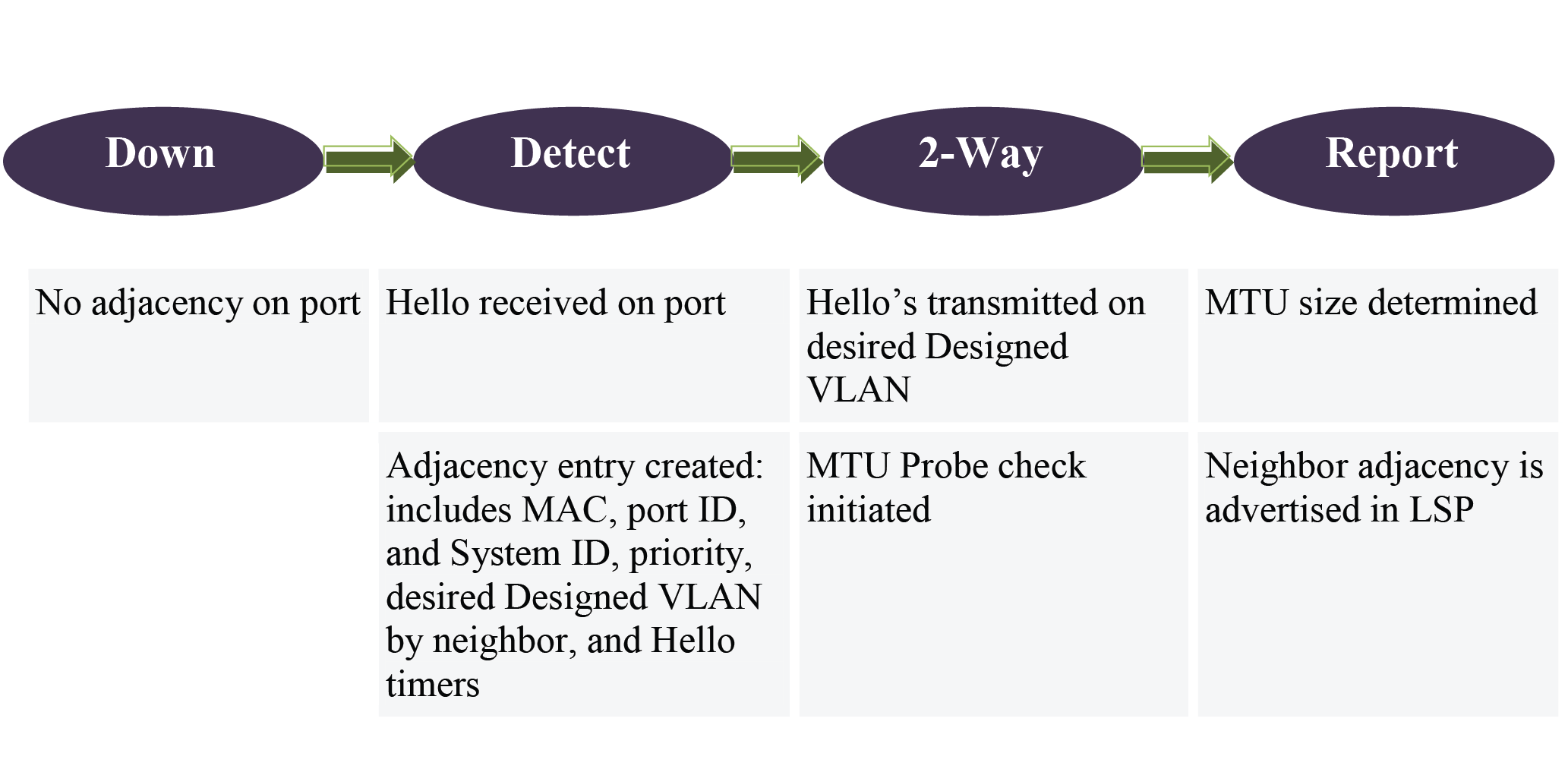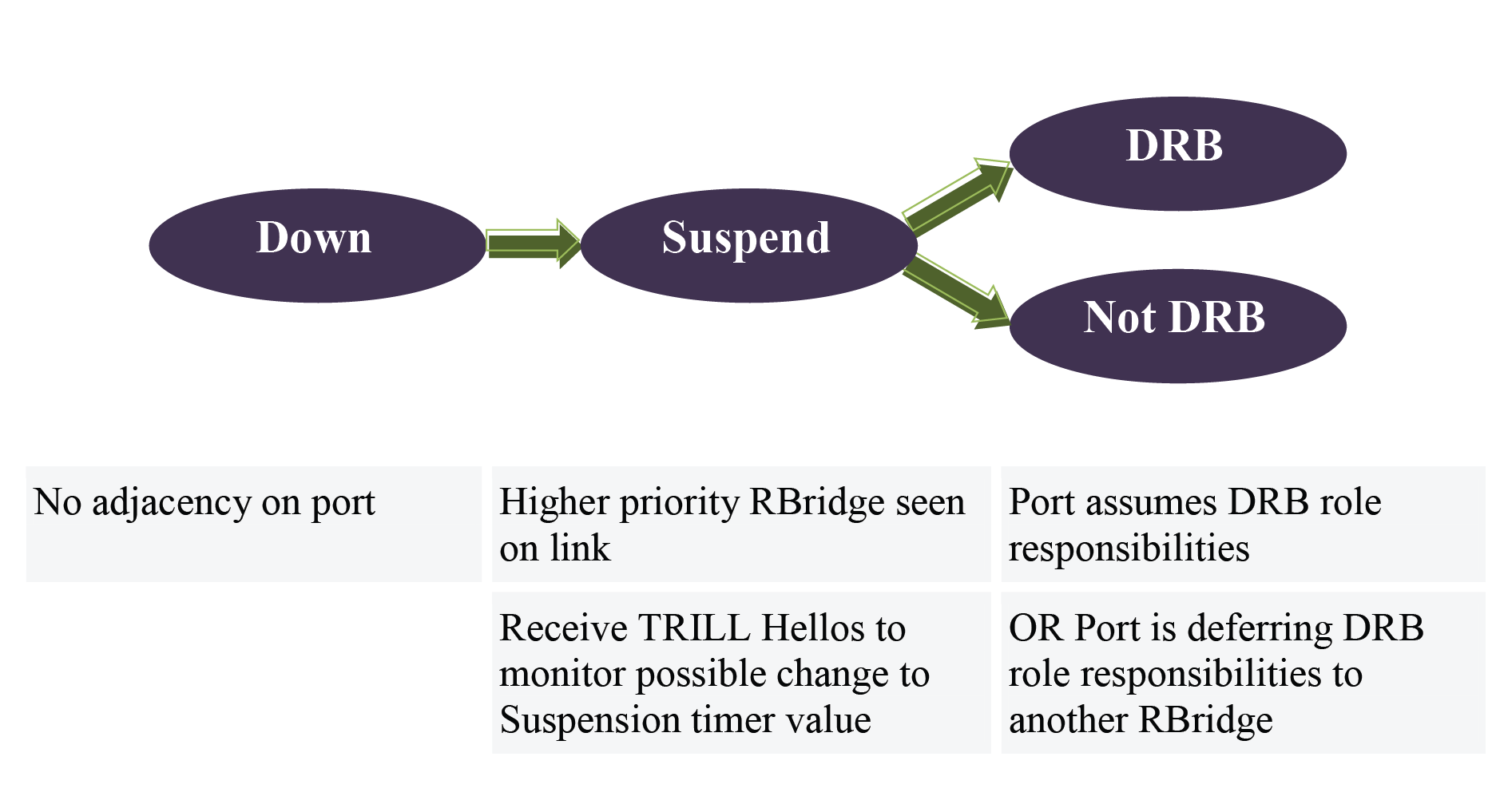Neighbor adjacencies are negotiated using the TRILL Hello protocol. If the link is point-to-point, the BY flag should be set to bypass pseudonode logic. Each RBridge sends TRILL Hellos on all TRILL configured VLAN ports and TRILL Access VLAN ports for which it believes it is the DRB. TRILL Hellos sent on all VLANs must be sent with the same MAC address, priority, desired Designated VLAN, and Port ID. If another RBridge is detected on the port, the RBridges progress through the following states as shown in the following figure, until the adjacency is established.

Once the adjacency has been established, the RBridges in the adjacency table negotiate which RBridge is the Designed RBridge. The Designated RBridge is the RBridge with the highest priority assumes the DRB role. If there is a priority tie, then the System ID (based on the MSB) breaks the tie. The suspension timer is used as a hold timer to allow other potential RBridges to advertise themselves on the link. Once the suspension timer expires, and if there is no higher priority RBridges on the link, then the local RBridge assumes the role of DRB. If a higher priority RBridge is seen, then the RBridge does not assume the DRB role. If at any time later, a higher priority RBridge is seen and the local RBridge is the DRB, then the local RBridge returns to Suspend state. If a Hello timeout occurs with the elected DRB and the local RBridge is the now the highest priority RBridge, then the local RBridge assumes the role of DRB.


 Print
this page
Print
this page Email this topic
Email this topic Feedback
Feedback